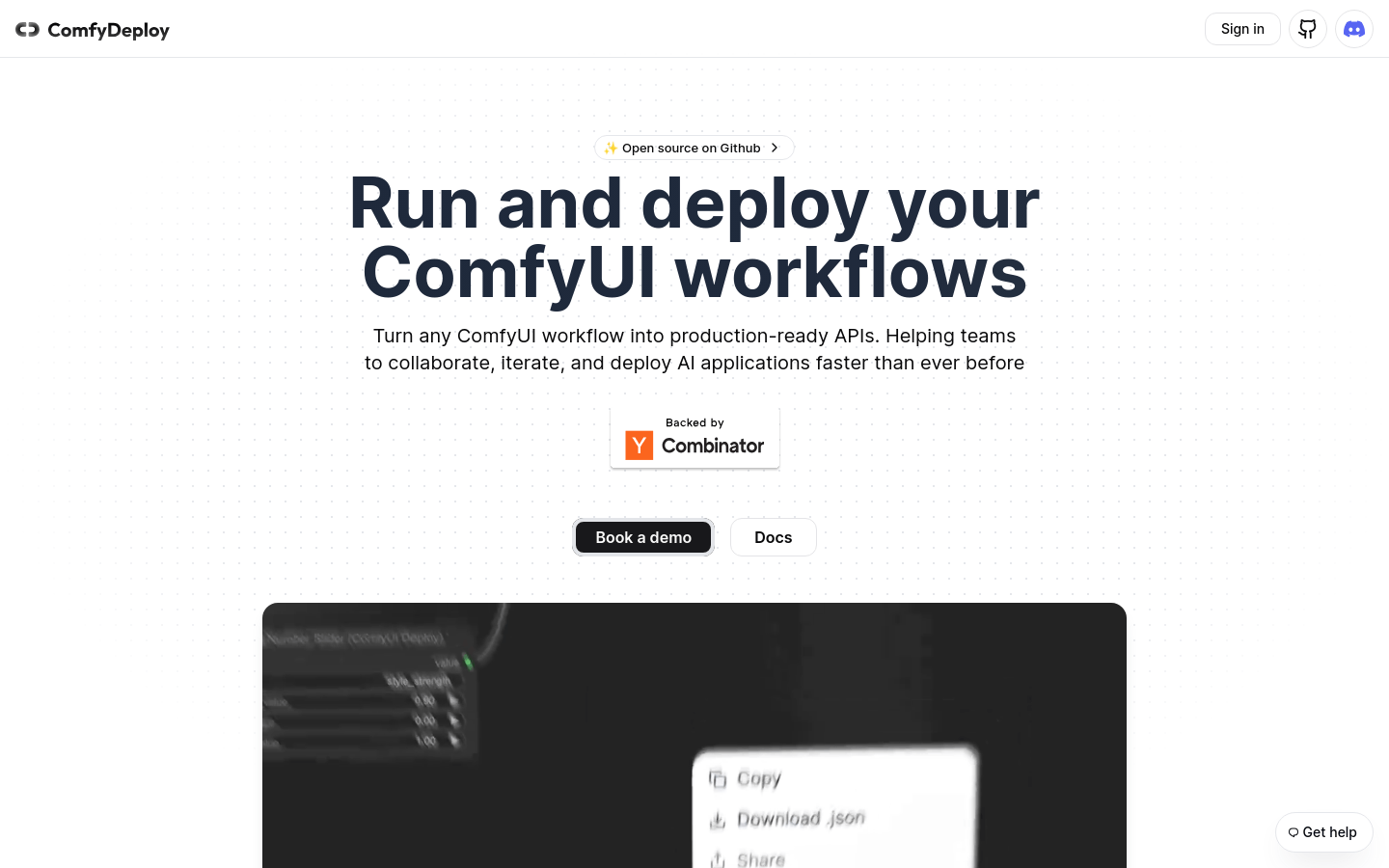

Comfy Deploy
Overview :
Comfy Deploy is an open-source platform designed for product teams, focusing on rapidly transforming ComfyUI workflows into production-ready APIs. It offers one-click API deployment, robust GPU management support, installation of any models and custom nodes, and the robust capabilities of ComfyUI without the need for self-hosting. By streamlining complex processes, the platform significantly enhances team collaboration, iteration, and deployment efficiency for AI applications.
Target Users :
The primary audience is product teams that require rapid iteration and deployment of AI applications, especially those utilizing ComfyUI for workflow design. This platform helps teams save configuration time and enhance efficiency by offering collaborative workspaces, version control, and one-click deployment features.
Use Cases
Mighty Bear Games increased their production time by 300% using Comfy Deploy, reducing it from 6 person-weeks to just 1.5 person-weeks.
The CEO of Secret Desires stated that Comfy Deploy provided a foundation for them to move quickly and save on engineering budgets.
AI engineers at Stealth noted that Comfy Deploy addressed key barriers associated with using ComfyUI, allowing them to deploy unique workflows.
Features
One-click API Deployment: Instantly convert any ComfyUI workflow into a scalable API.
GPU Management: Easily scale processing power based on project needs with hardware-agnostic hosted GPUs.
Custom Node Support: Install any Loras or SafeTensors via cloud storage to resolve bandwidth issues.
Version Control: Edit and share workflows to facilitate team collaboration.
Observability: Simplify complex processes while providing an intuitive platform experience.
Multilingual SDK Support: Offer software development kits in TypeScript, Python, Ruby, and other languages.
How to Use
1. Register and log in to the Comfy Deploy platform.
2. Create or select a workflow for editing and sharing.
3. Configure the workspace to facilitate team collaboration and version control.
4. Use the one-click API deployment feature to convert workflows into APIs.
5. Select and manage GPU resources as needed.
6. Install required custom nodes and models.
7. Integrate the API into applications using the multilingual SDK.
8. Monitor and optimize the performance of deployed APIs.
Featured AI Tools

Gemini
Gemini is the latest generation of AI system developed by Google DeepMind. It excels in multimodal reasoning, enabling seamless interaction between text, images, videos, audio, and code. Gemini surpasses previous models in language understanding, reasoning, mathematics, programming, and other fields, becoming one of the most powerful AI systems to date. It comes in three different scales to meet various needs from edge computing to cloud computing. Gemini can be widely applied in creative design, writing assistance, question answering, code generation, and more.
AI Model
11.4M
Chinese Picks

Liblibai
LiblibAI is a leading Chinese AI creative platform offering powerful AI creative tools to help creators bring their imagination to life. The platform provides a vast library of free AI creative models, allowing users to search and utilize these models for image, text, and audio creations. Users can also train their own AI models on the platform. Focused on the diverse needs of creators, LiblibAI is committed to creating inclusive conditions and serving the creative industry, ensuring that everyone can enjoy the joy of creation.
AI Model
6.9M

















